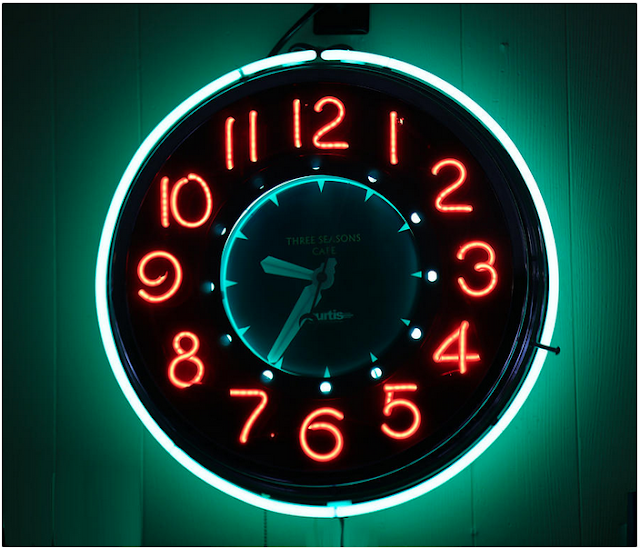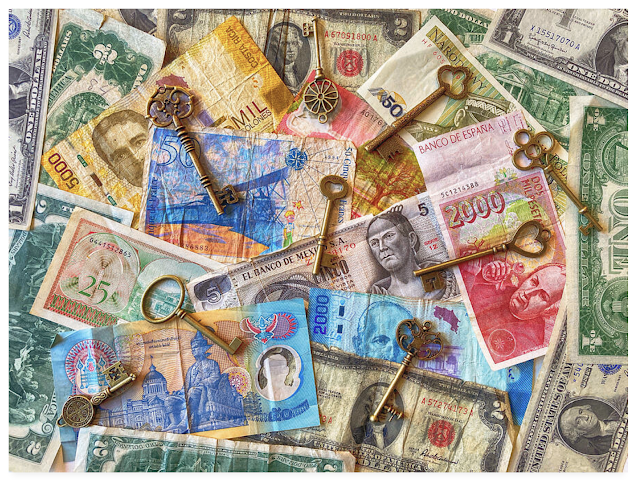Watching Time
Looking around my bedroom, I have five clocks in various locations. One old wind-up alarm clock from my parent’s house, two tiny square battery operated clocks, also from my parent’s house a small battery-operated travel alarm on my night stand that we bought for travel before the advent of cell phones, and one digital clock radio on the dresser. I also have a round battery wall clock in my living room. The other two clocks in the house are just the digital clock on my stove, and the microwave.
The neon clock shown here was photographed at a small restaurant in Manistique, Michigan. I remember the restaurant for a decent Greek salad that they promptly ruined by drowning it in about two cups of dressing, and this clock. The waitresses looked at me funny when I pulled out the camera to photograph the clock, but that’s ok, it’s a cool clock.
The pocket watches were my father’s but I really didn’t know he had these until I cleaned out his house. One of them is actually a dedicated stop watch. I suppose they may have originally belonged to my grandfather. None of them work.
Pocket watches were originally developed in the 16th century, and usually have a chain or a strap allowing them to be attached to a belt loop or lapel. The earliest pocket watches only had an hour hand and the minute hand didn’t appear until the middle of the 17th century.
The early watches would lose as much as half an hour in a week so they were not that accurate. When the pull-out stem was introduced, it helped prevent inadvertent accidental time changes. When train engineers started using pocket watches, strict requirements were instituted into the type of watch they could use due to an accident in 1891 caused when an engineer’s watch supposedly stopped working for four minutes. The new regulations required engineers’ watches to be accurate to within 30 seconds per week. They also had to fit into a certain size range and have a certain number of jewels (synthetic rubies created using aluminum and ammonia sulfate).
 Clock makers as opposed to watch makers, were generally also makers of medical instruments because they were used to working on small intricate mechanisms. Before 1800, all clocks and parts therein were made by hand. Clock makers used to belong to guilds and were highly trained and practiced their craft for a long time becoming masters.
Clock makers as opposed to watch makers, were generally also makers of medical instruments because they were used to working on small intricate mechanisms. Before 1800, all clocks and parts therein were made by hand. Clock makers used to belong to guilds and were highly trained and practiced their craft for a long time becoming masters.In any case, the charm of a pocket watch, a wrist watch or even an analog clock is being slowly eroded by the digital cell phone clock and the digital clocks on other devices. I feel kind of sad that they are being phased out, but what really kind of appalls me is that a lot of young people do not know how to even read an analog clock. Just like they don’t know how to use a rotary phone. Oh well, I guess I should just feel “wise” in my old age and leave it at that!

For more of my clocks and watches please visit my gallery here:
https://mary-bedy.pixels.com/collections/watching+time





Comments
Post a Comment